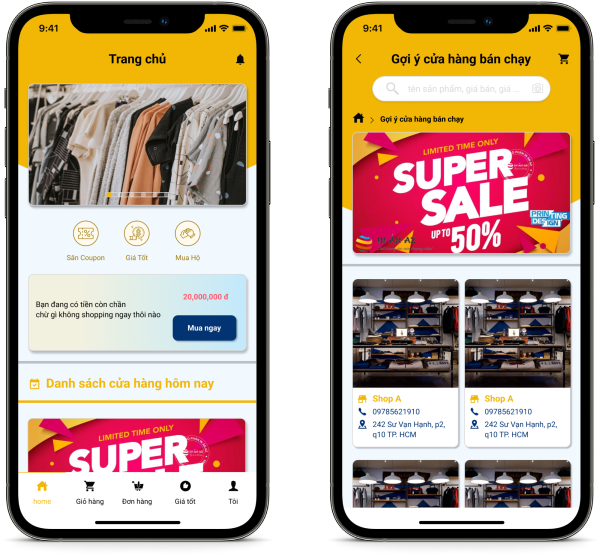The project of INFORMATICS QTC company
Project
E-commerce project for workers
platform
Design for mobile app platform
My work to comeplete
Building end-to-end for the entire application system, from research and conceptualization to all aspects of the customer system, seller system, supplier system, and admin system.
Completion time
6 months
overview
Recognizing the issue, such as difficulties faced by workers, the application was developed to help users take time and reduce costs. During the research process, the solution of a proxy purchasing function was found to significantly increase users’ purchasing activities.
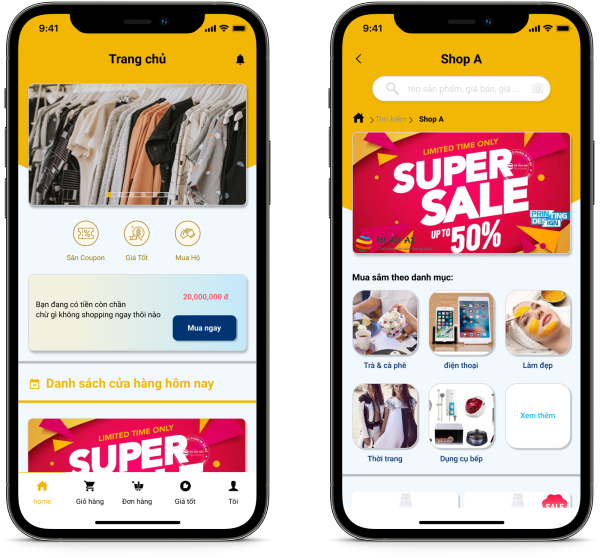
The 529 E-commerce Project
product thinking
- Problem space
- Demographic
- Business Goal
- Solutions
Visual design
lesson learned
usability testing
- Usability testing process
- Summary of research findings
product thinking
Problem space
- With low income, prices are rising faster than wages. Workers today face significant challenges in managing daily expenses for living, children, and family needs…
- Additionally, they don’t have much free time, as their work often extends throughout the day, sometimes requiring overtime until evening. As a result, they can only spare time for shopping and errands every 3 days to a week.
Demographic
- They are low to middle-income workers compared to the general average.
- They are usually not very tech-savvy and primarily engage in manual labor. Their understanding of using smartphones is still limited.
- Their age ranges from 18 to 45 years old. Most of them are from disadvantaged rural provinces who move to cities to work in industrial zones, mainly concentrated in large cities like Ho Chi Minh City, Binh Duong, etc.
Business Goal
- Recognizing that workers are one of the potential groups that need to be developed. Their primary goal is to address issues related to commuting time and the cost of goods, which should be optimized to make prices more affordable, helping them to better manage their daily lives and save money.
- If there is a platform that helps them improve their lives, it will contribute to building a stronger and wealthier nation, as workers are one of the key groups driving the country’s production output and playing a significant role in economic development.
- Our mission is to develop an e-commerce project named 529.
Solutions
- Have to the relationship between the business and its partners in consumer products, they will be supplied with a certain amount of goods from the supplier. By linking with industrial zones and grocery stores to distribute products, it helps increase their revenue. As a result, they can offer products at competitive and reasonable prices compared to the market.
- We will also improve delivery services to supply products to industrial zones, helping citizens limit their need to travel, which is a significant concern for them.
usability testing
1. Usability testing process
Goals
- Want to care about the users in terms of how they use the product and how they experience the application?
- Do they face any difficulties or have any desires regarding the application that we have not been able to address yet?
Interviewer (demographic)
- Age: 25 – 40 years old
- Location: Living in Ho Chi Minh City and Binh Duong
- Characteristics: They are workers concentrated in industrial zones. They are quite busy, have little free time, and often work overtime. They are also friendly and sincere, living a simple life with three meals a day, saving small amounts of money for their children’s education and sending remittances to their poor families in their hometowns.
Usability testing protocol
- Location: Offline
- Introduction: Topic about the experience with the e-commerce application 529
- Warm-up: Discuss life, people, and current challenges. After checking in, we briefly introduce the app and its features, inviting them to try the product.
- Conclusion: They will receive a small gift and a token of appreciation, along with thanks for completing tasks during the experience.
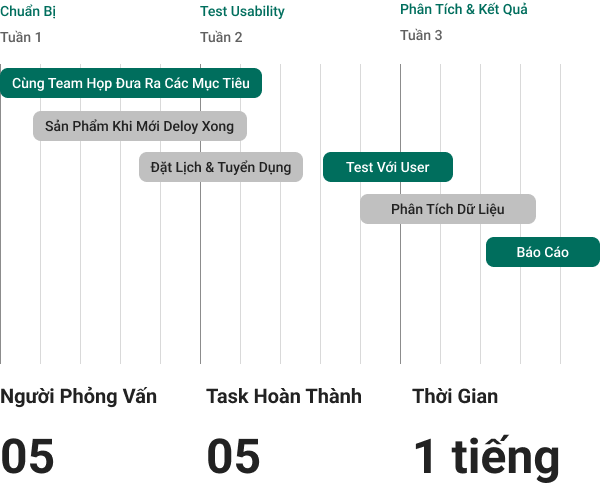
2. Summary of research findings
Some trends have been found
- In a working-class family, very few people use smartphones.
- They are also familiar with and use some e-commerce applications for shopping.
- Understanding the user also means understanding the purchasing process and having the experience.
- Some families support each other by taking turns buying daily cooking necessities, as they are sometimes busy with overtime work.
- Some do not use smartphones.
- This is a significant issue we aim to address: for those who do not use smartphones, they will ask friends or family members to buy things for them.
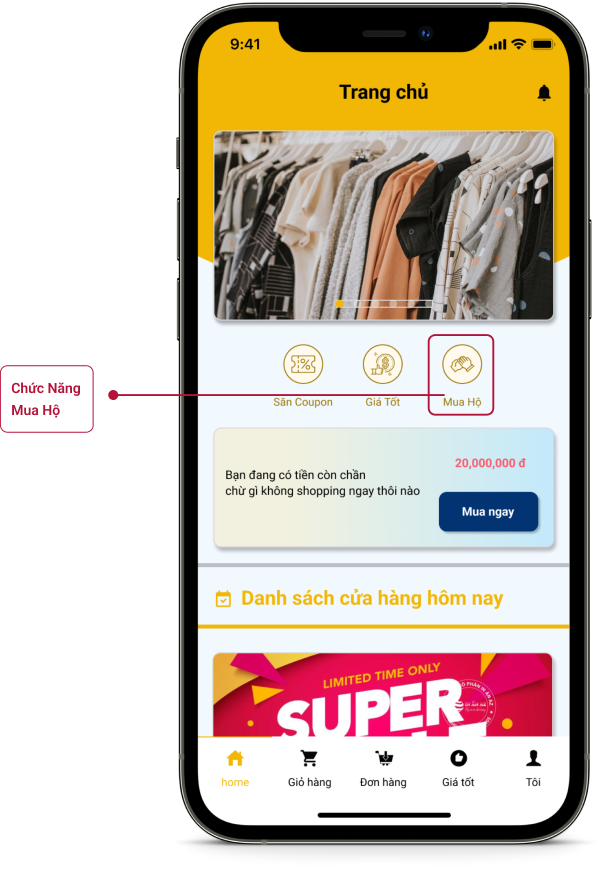
Build a proxy purchase function
The purchasing process is quickly outlined and delivered as a design file, through several screens as follows:
- Screen for recipient information:
- Select industrial zone.
- Choose the purchasing store.
- Select company address.
- Full name.
- Phone number.
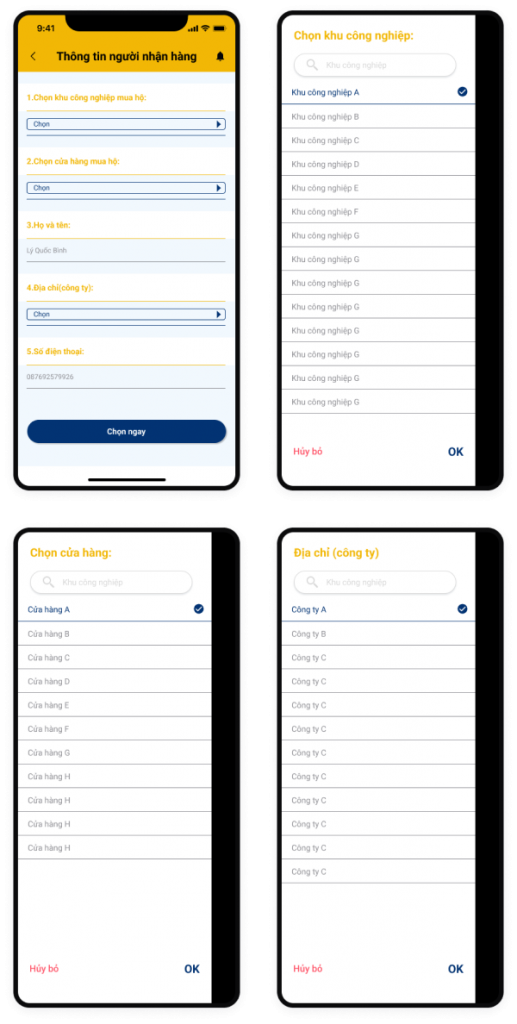
Some screens during the construction process, and if you want to complete a proxy purchase process, you must meet the following conditions:
- If you currently have an order in your cart (your own personal order), you will not be able to proxy purchase process. If you proceed, all orders in your cart will be deleted.
- If you are in the proxy purchase process and then return to the homepage, the purchase order proxy purchase will be canceled.
- If you are purchasing proxy purchase process for Shop A and you want to switch to another shop, the order for that shop will be canceled.
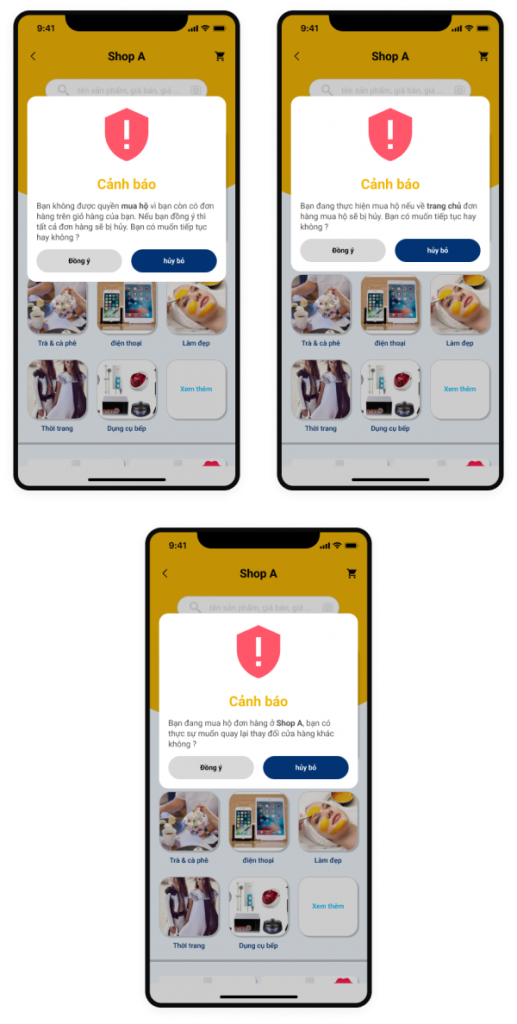
visual design
I would like to share more about some visual designs in the e-commerce application 529. The project has been developed and adjusted to better align with the target users we aim to serve.
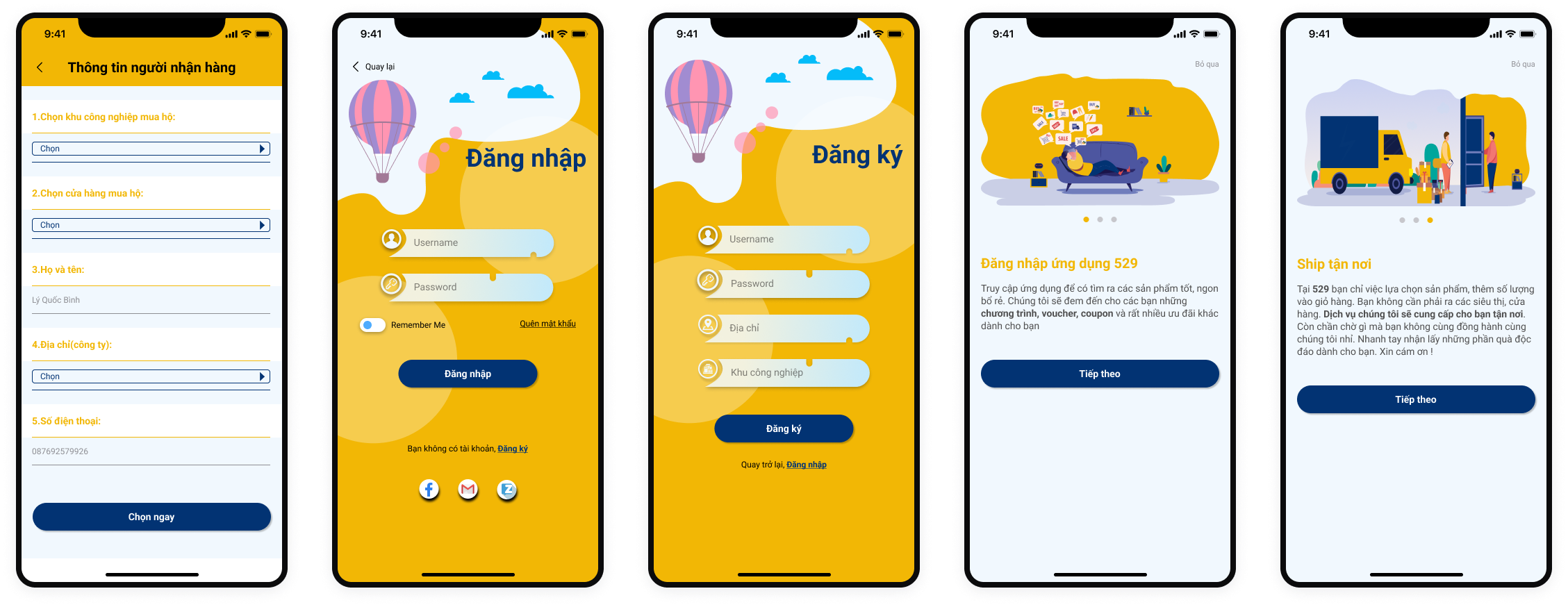
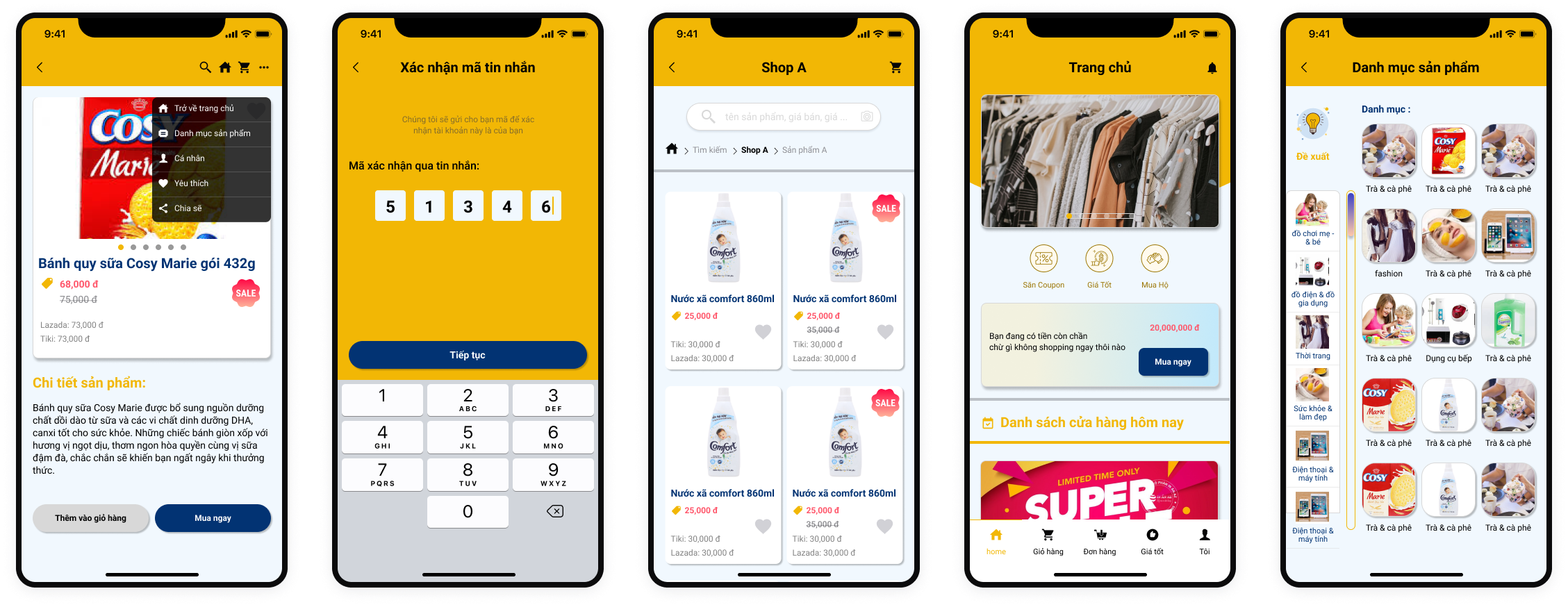
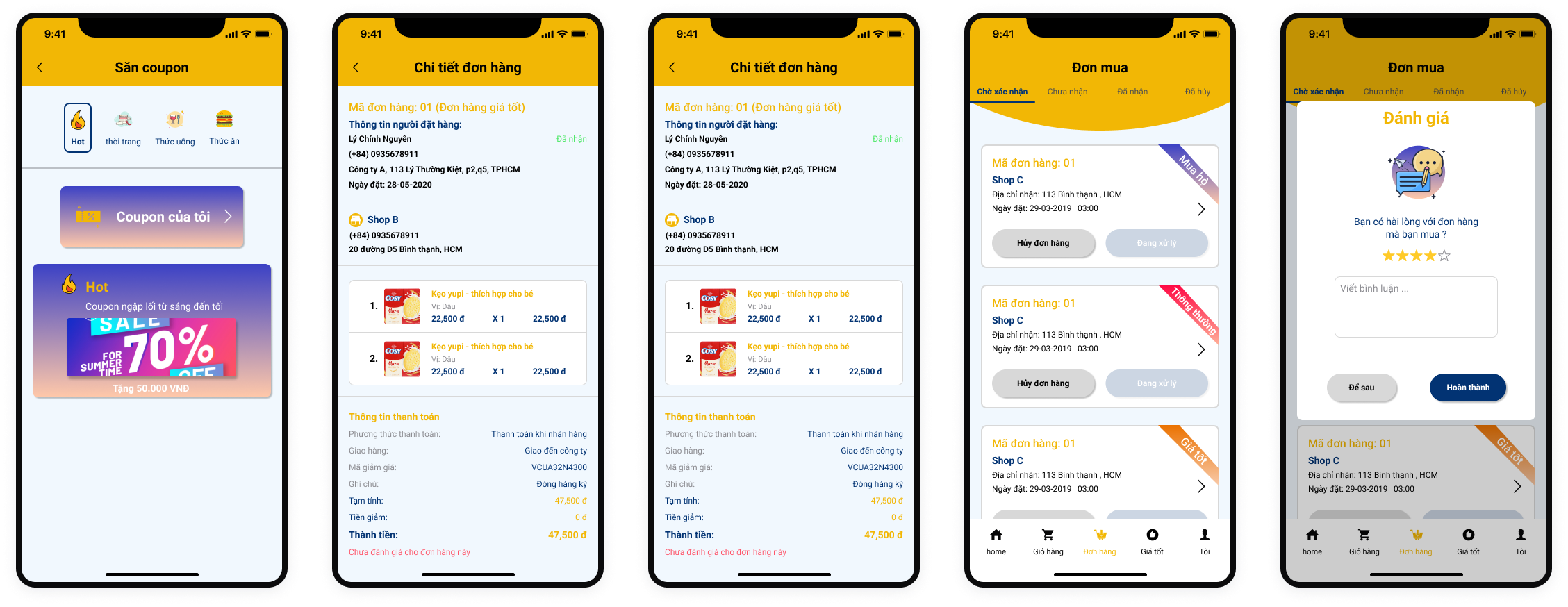
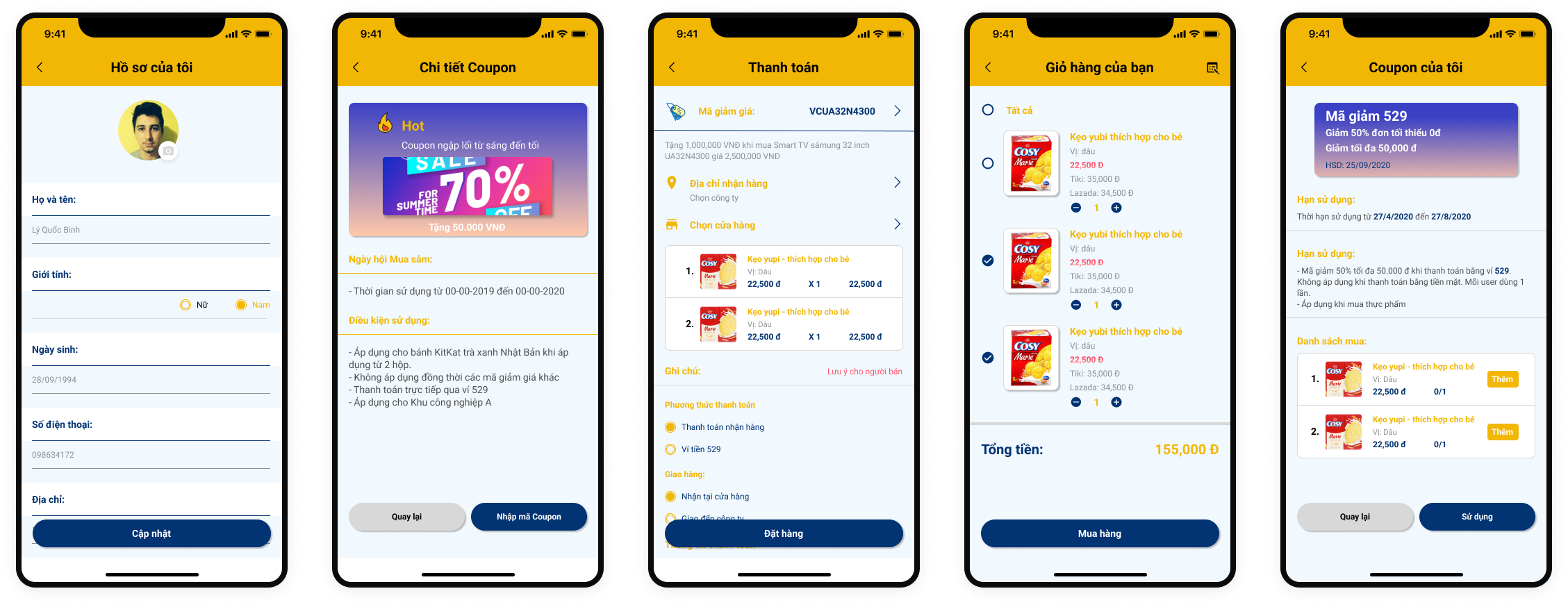
lesson learned
Goal of case study
- Understanding how to identify user difficulties through usability testing. Resolving pain points and ensuring their satisfaction, as well as increasing sales for retailers.
- Mastering the comprehensive design process of a large-scale e-commerce application, including all screens for user, retailer, supplier, and administration flows.
